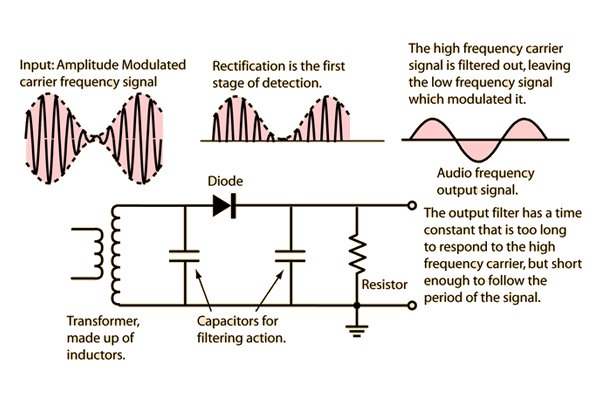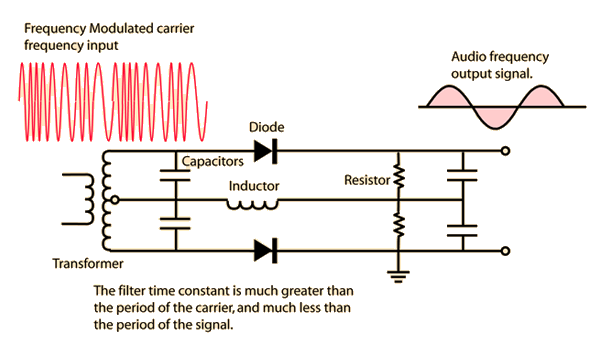AM Detector
The detection of AM radio signals is a diode application.

The modulated AM carrier wave is received by the antenna of the radio receiver and is rectified by the action of a detector diode. Then the rectified signal passes through a low-pass filter for which the time constant is too long to respond to the high frequency of the AM carrier wave. AM carriers are in the range 600 to 1400 kHz. The signal frequency which modulates it is much lower, 0.02 to 5 kHz, and it can pass through the filter.
The AM detector shown here would be suitable for picking up only one AM radio station for which the values of the capacitors and inductors were chosen. A practical AM radio use the process called heterodyning to shift the carrier frequency of each radio station to a single frequency called an Intermediate Frequency or IF so that a single sophisticated AM detection circuit can be used to receive all AM radio stations.
Electronics concepts
Diode varieties
| HyperPhysics*****Electricity and magnetism | R Nave |
